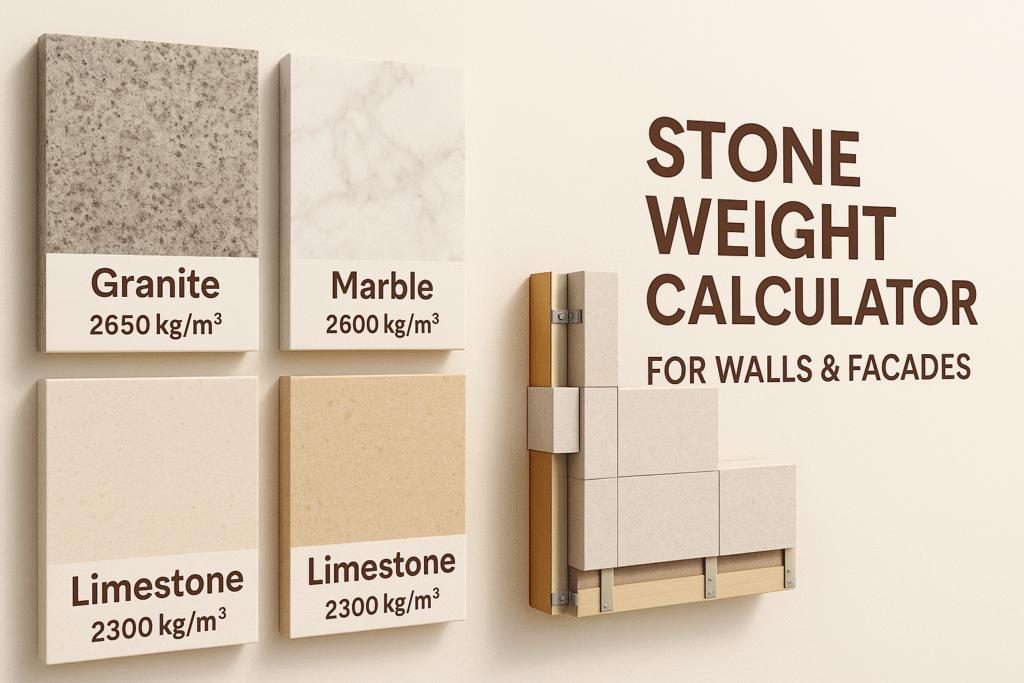Stone Weight Calculator helps you estimate wall & facade weight, volume, load per m², panels needed, and logistics with wastage & breakage reserves.


Stone Weight Calculator helps you estimate wall & facade weight, volume, load per m², panels needed, and logistics with wastage & breakage reserves.